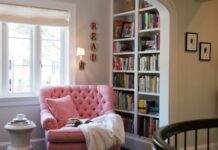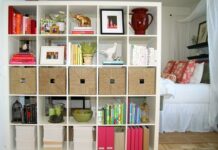By Melissa Rayworth
A bungalow on the beach. A cabin for weekend getaways.
Second homes, designed for relaxation, are often decorated with hand-me-down furniture and other cast-offs from the owner’s main living space.
But, say interior designers, a bit of creativity can transform a small vacation home into the perfect haven — a place to combine family heirlooms, funky flea-market purchases and a few new pieces, with style and on a budget.
“Second homes are all about the three f’s: family, friends and flea markets,” said designer Brian Patrick Flynn, founder of Flynnside Out Productions. “There are really no rules, but the one thing to keep in mind is that second homes are the best place to showcase your personality by filling them with one-of-a-kind pieces packed with sentiment and history.”
Some ideas for getting this laidback, layered style:
A mix of decorating styles is great; just don’t overload the space, said HGTV host Sabrina Soto.
“Mixing in multiple elements can create an overwhelming and cluttered interior,” Soto said, so “avoid over-accessorizing with knickknacks and space holders.”
She also advises against “grouping a certain style in one corner and the other style in another.”
Go ahead and combine two plaid chairs with a floral sofa, though. Kyle Schuneman, author of The First Apartment Book: Cool Design for Small Spaces, recommends mixing the scale of the patterns but keeping the scale of the furniture the same.
“So if you have a small sofa, keep the side chairs in that same scale. Then with the fabric in the room, for instance, use a small pinstripe, a medium plaid and a large graphic pattern as your three mix-ins. By keeping the patterns in a different scale, it keeps it from getting too busy and fighting each other for attention,” he said.
Color can also help one piece stand out: Paint an old wooden dresser a bold yellow, Schuneman said, then “keep the other pieces muted with just textures of metals and woods.”
And even when styles are drastically different, Soto said, “consider their color. If they’re in the same color range, they’ll fit perfectly together in one space.”
Second homes are often in small towns with weekend flea markets and antique shops. Flynn suggests mixing your own family hand-me-downs (your grandfather’s old reading chair, say, or your dad’s collection of Hardy Boys books, or a painting made by a relative) with flea-market purchases that connect with your personal history.
For the kitchen of his weekend home in the Hollywood Hills, for instance, Flynn bought a vintage Circle K sign at the Rose Bowl Flea Market.
“I grew up in Fort Lauderdale, Fla., and spent a ton of time at the Circle K on weekends” getting ready for the beach, he said. “Every time I walk past the dining room, I kind of feel that carefree, beachy feeling all over again.”
A vintage item picked up for $5 can sometimes become the star of a room.
“My living room walls are completely covered with flea-market art picked up for next to nothing. Best part? Everyone always asks me what gallery I source all of my amazing art from,” Flynn said.
Blending old with new can be fun: “In my bedroom, I updated the floors with white vinyl plank and custom window treatments made from high-end Schumacher chinoiserie fabric. But the 1960s bubble chair and a 1970s wood dresser picked up for $60 at the Long Beach Flea Market are vintage,” Flynn said. “The blend helps keep everything somewhat fresh and current, but not feeling like ‘I got this all from the same catalog.’ ”
Second homes are often small, so decorate with that in mind.
“A cluttered space will always appear smaller,” Soto said, so keep a smaller room clean. She suggests hanging shelves to keep items off the floor, and using mirrors to make rooms appear larger and brighter.
“Incorporate pieces with dual purpose, such as storage ottomans which can act as seating while concealing your clutter,” she said. “Stacking chairs or nesting tables are great, too.”
Schuneman agrees: “Usually with a second home you use it for relaxation and entertaining, so keep the pieces double duty. Benches that can work as side tables, poufs that can work as extra seating, and a desk that can also work as a bar or buffet at night.”
“Also, bringing in local flora like driftwood or maybe a stump or natural elements that bring the outside in really makes it feel like a destination home,” Schuneman said, “and for free.” — AP












